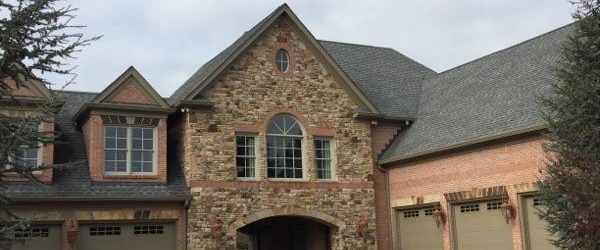A lot of prep work goes into creating the perfect base for an exterior painting job. To deliver the perfect results, we make sure to follow all the necessary steps in order to make sure that the paint applies evenly without any bubbles or other flaws.
First we scraped off the loose paint. We also scraped and sanded where we needed to feather edges for aesthetics, and create a good base for the paint.
It’s vital to seal any cracks, as well as the joints where one type of exterior material meets another. This includes: window frames, door frames, molding and fascia boards. We replaced fascia boards that showed signs of rotting. We then sanded wood trim and doors to ensure an ideal surface for painting. A good exterior paint was then applied to the exterior surfaces.

Staining wood Shingles
Staining cedar shingles not only enhances their beauty but also fortifies them against threats posed by the elements. To protect shingles we applied a penetrating stain. The stain soaks in and protects the wood from the weather, and it will prevent it from cracking, peeling, or chipping. We liberally brushed along the bottom edges of each course and then over the face of the shingles with a generous coat of stain. We started at the top courses and worked our way down.
Pergola Staining
We checked the damaged boards that needed to be replaced. We pressure washed the pergola surface and allowed it to dry for at least 24 hours. We examined all the wood and made sure it was clean. We hand sanded areas that need additional attention.
We then covered nearby areas of the house and make sure stain wouldn’t get on the siding or on the deck/patio. Using a spray shield or piece of cardboard will block any stain from getting to unwanted areas. Sprayed the stain in a consistent pattern and covered the surface well.

